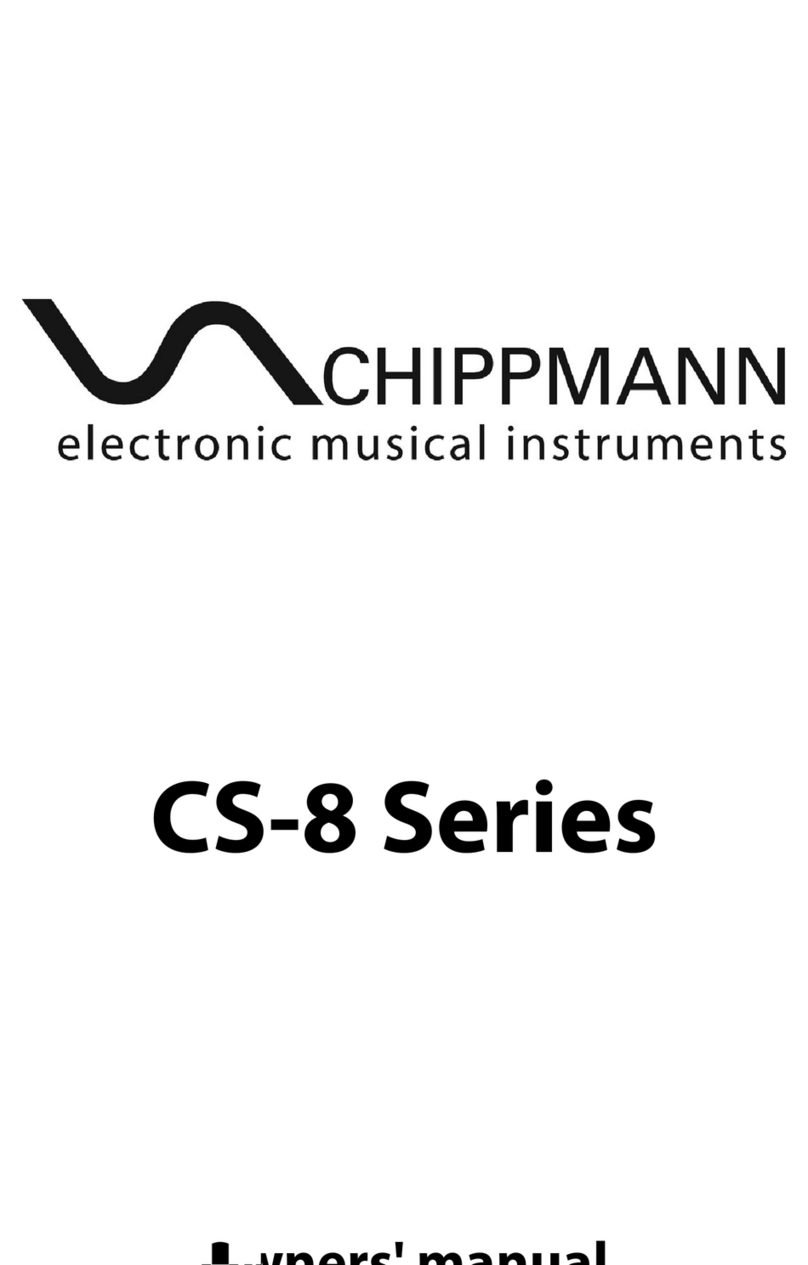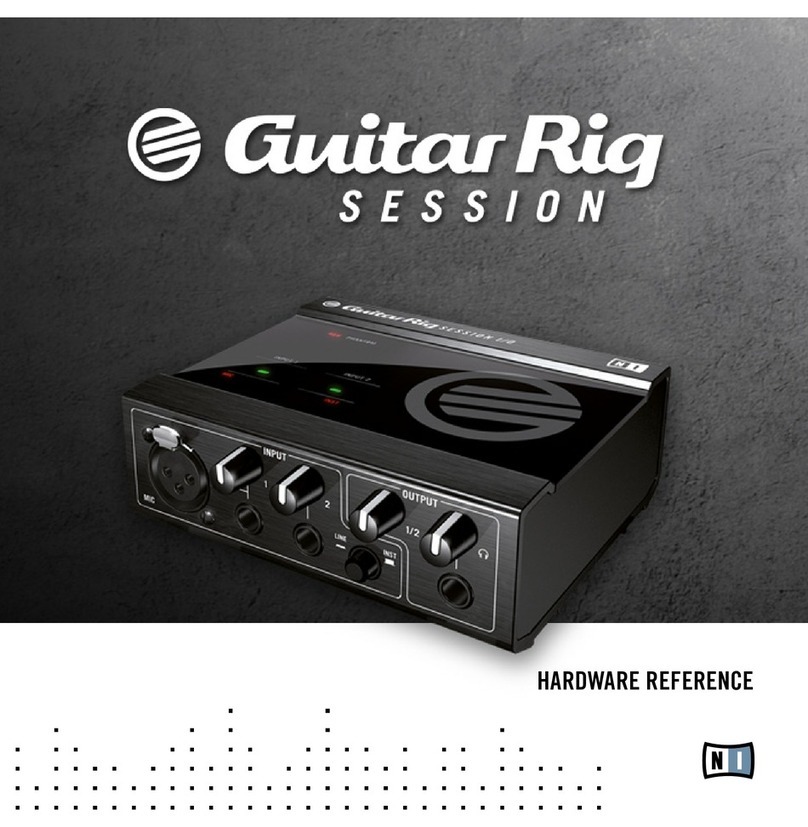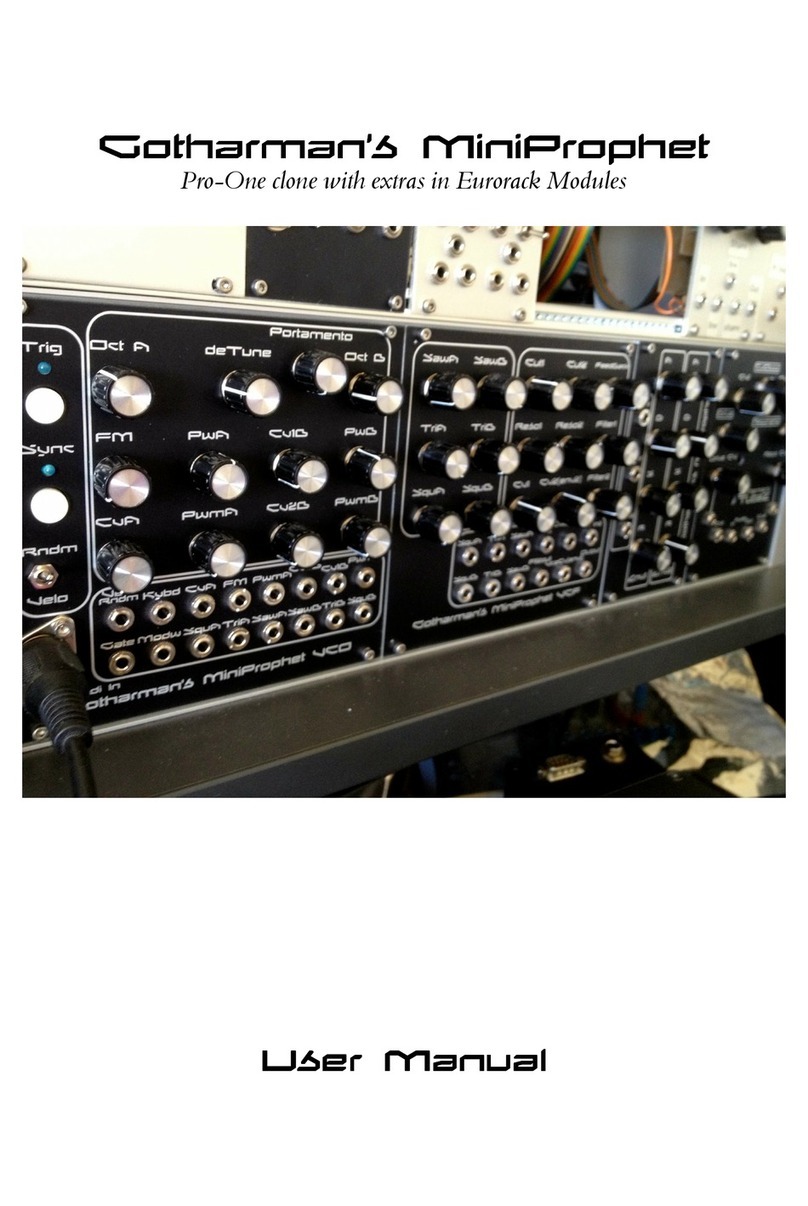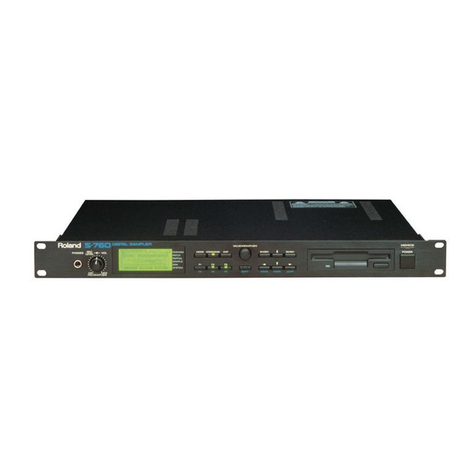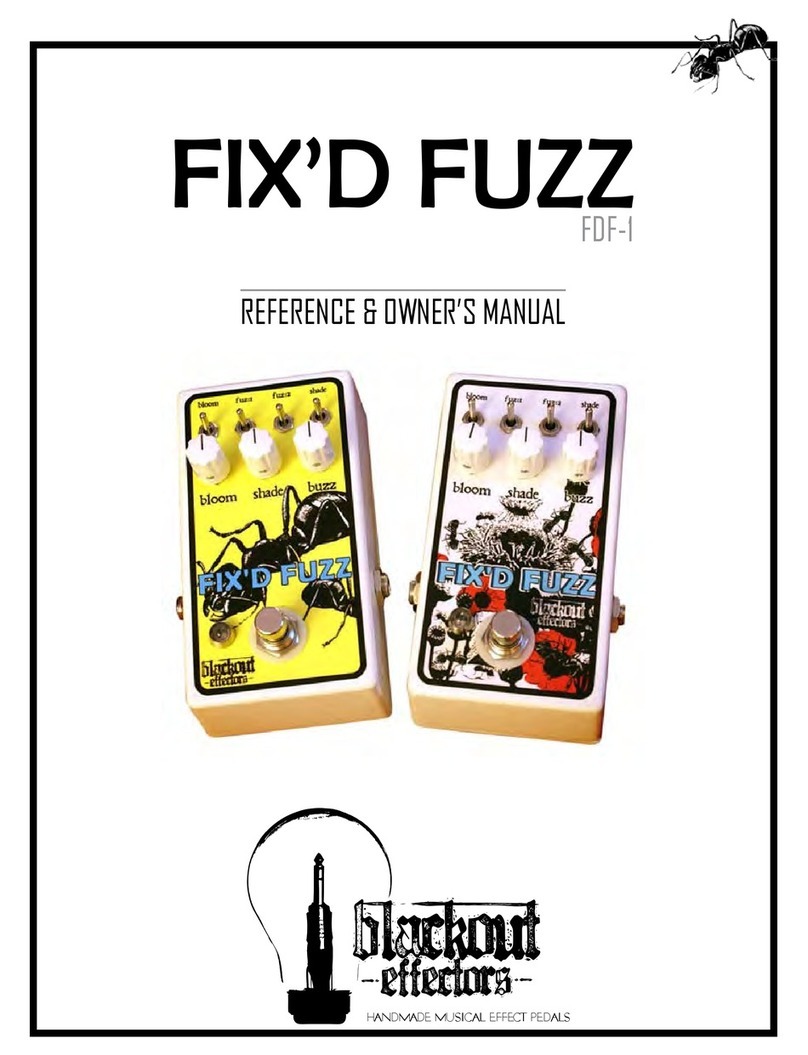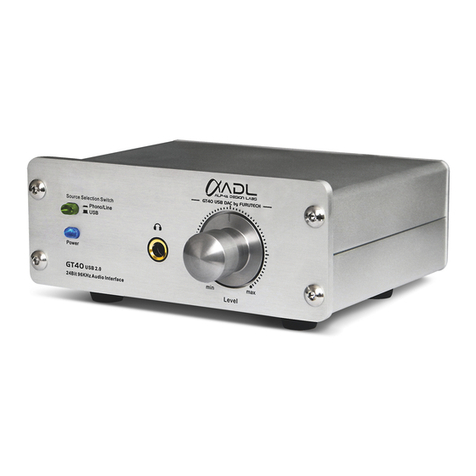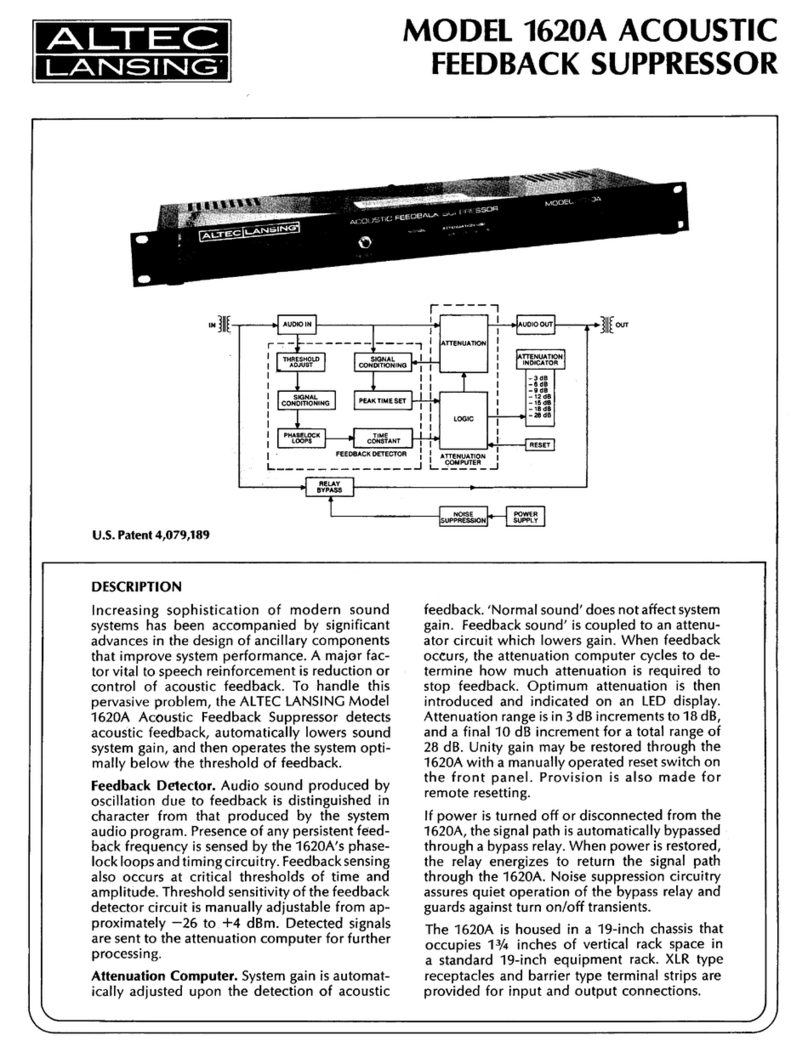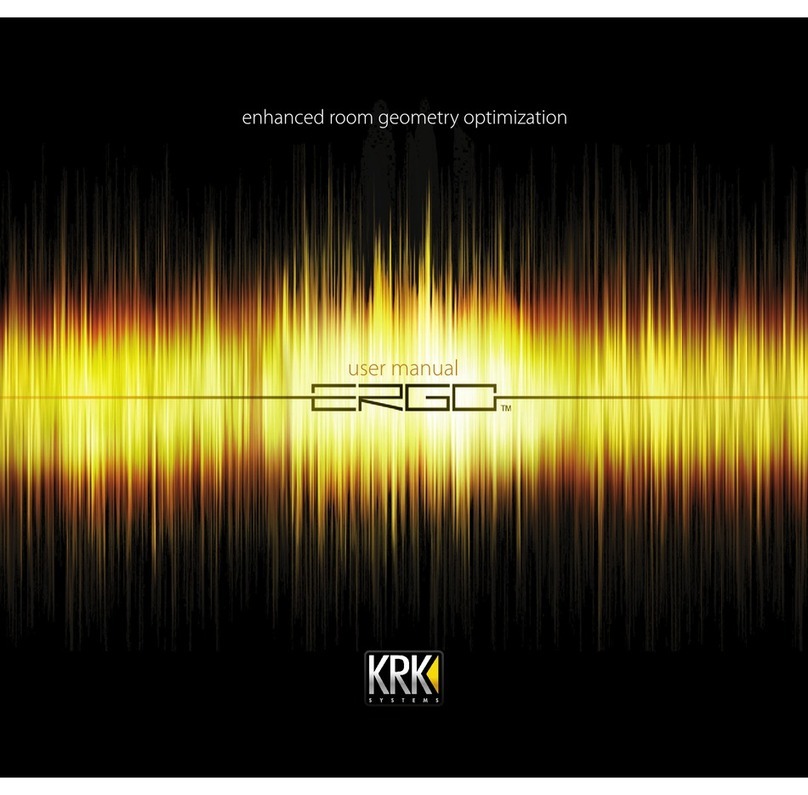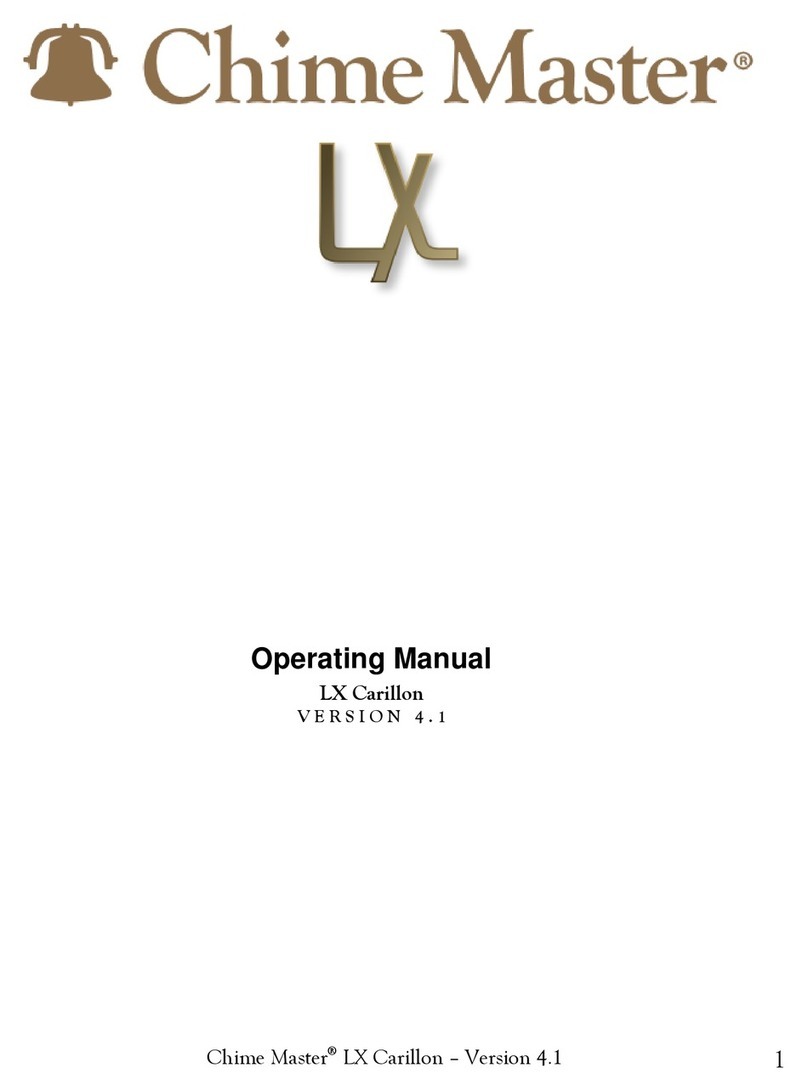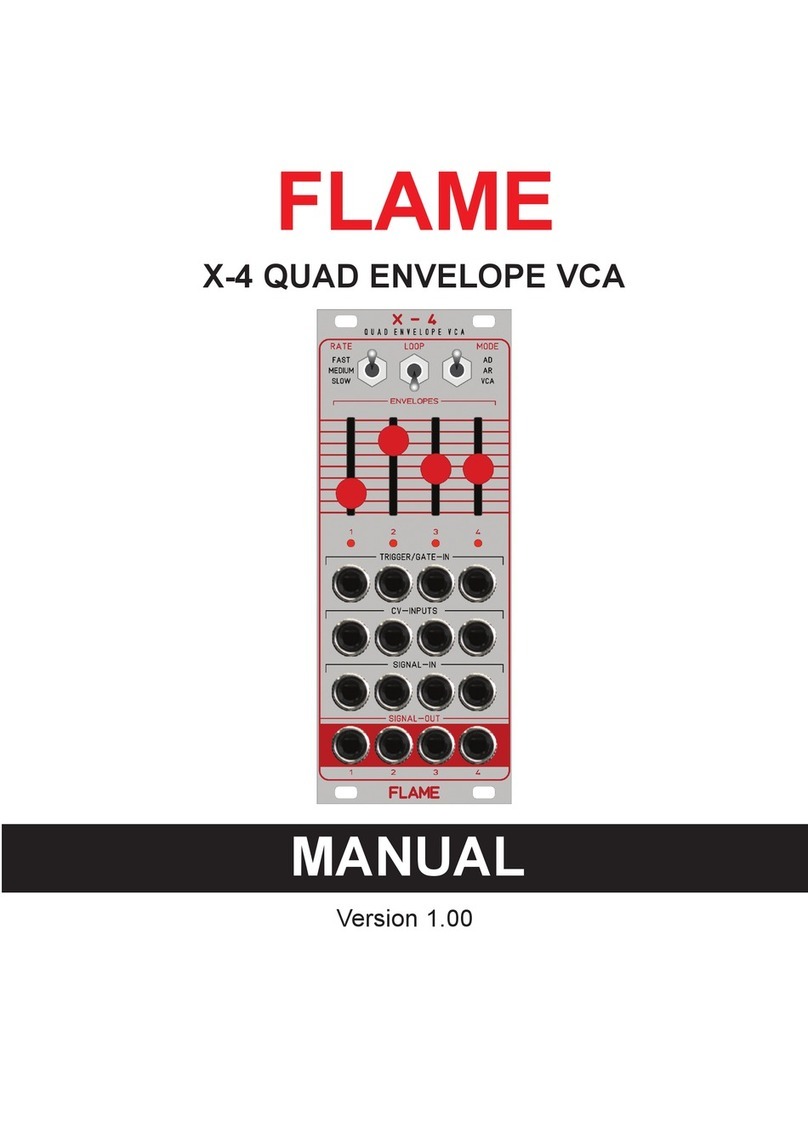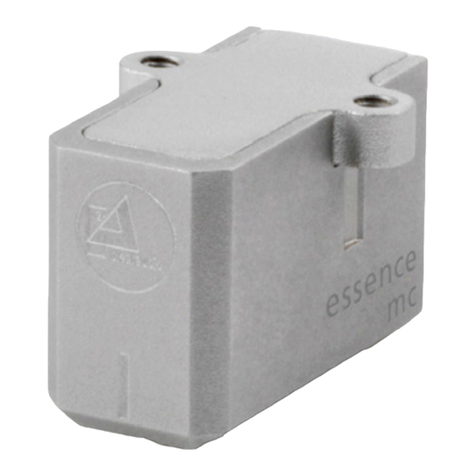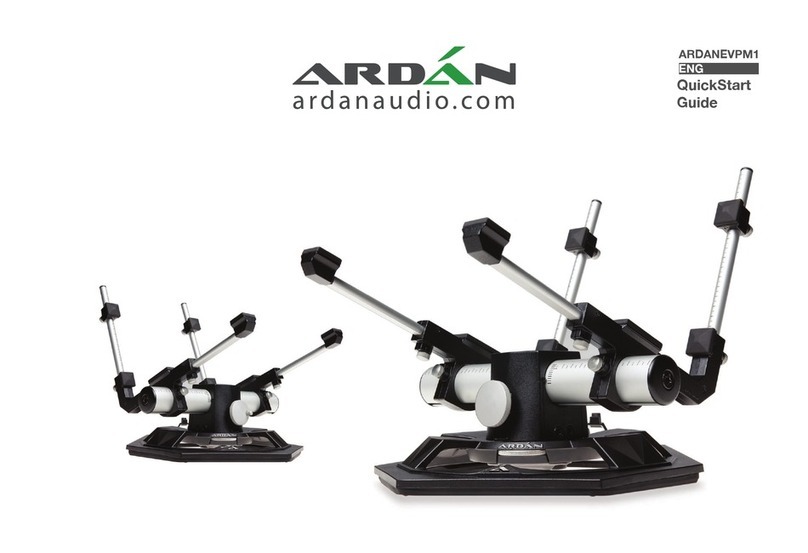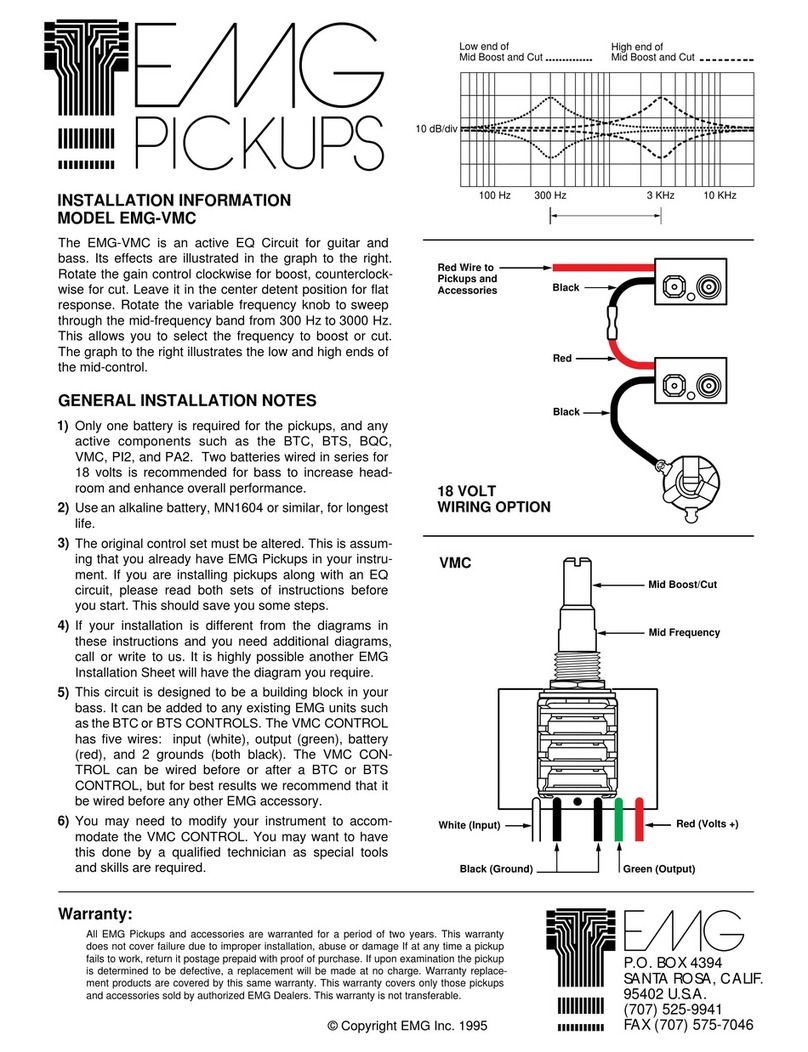NONLINEAR LABS C15 User manual

Parameter Reference

NONLINEAR LABS GmbH
Helmholtzstraße 2-9 E
10587 Berlin
Germany
www.nonlinear-labs.de
info@nonlinear-labs.de
Document Version: 1.2
Date: May 24, 2022
Author: Matthias Seeber
© NONLINEAR LABS GmbH, 2022, All rights reserved.

Contents
Comment . . . . . . . . . . . . . . . . . . . . . . . . . . . . . . . . . . . . . . . . . . . . . . . . 5
Legend to signs and symbols . . . . . . . . . . . . . . . . . . . . . . . . . . . . . . . . . . . . 6
Envelope A . . . . . . . . . . . . . . . . . . . . . . . . . . . . . . . . . . . . . . . . . . . . . . . . 8
Envelope B. . . . . . . . . . . . . . . . . . . . . . . . . . . . . . . . . . . . . . . . . . . . . . . .10
Envelope C . . . . . . . . . . . . . . . . . . . . . . . . . . . . . . . . . . . . . . . . . . . . . . . .12
Oscillator A. . . . . . . . . . . . . . . . . . . . . . . . . . . . . . . . . . . . . . . . . . . . . . . .14
Shaper A . . . . . . . . . . . . . . . . . . . . . . . . . . . . . . . . . . . . . . . . . . . . . . . . .16
Oscillator B. . . . . . . . . . . . . . . . . . . . . . . . . . . . . . . . . . . . . . . . . . . . . . . .18
Shaper B . . . . . . . . . . . . . . . . . . . . . . . . . . . . . . . . . . . . . . . . . . . . . . . . .20
Comb Filter . . . . . . . . . . . . . . . . . . . . . . . . . . . . . . . . . . . . . . . . . . . . . . .22
State Variable Filter . . . . . . . . . . . . . . . . . . . . . . . . . . . . . . . . . . . . . . . . . .24
Feedback Mixer . . . . . . . . . . . . . . . . . . . . . . . . . . . . . . . . . . . . . . . . . . . . .26
Output Mixer. . . . . . . . . . . . . . . . . . . . . . . . . . . . . . . . . . . . . . . . . . . . . . .28
Flanger . . . . . . . . . . . . . . . . . . . . . . . . . . . . . . . . . . . . . . . . . . . . . . . . . .30
Cabinet . . . . . . . . . . . . . . . . . . . . . . . . . . . . . . . . . . . . . . . . . . . . . . . . . .32
Gap Filter. . . . . . . . . . . . . . . . . . . . . . . . . . . . . . . . . . . . . . . . . . . . . . . . .33
Echo . . . . . . . . . . . . . . . . . . . . . . . . . . . . . . . . . . . . . . . . . . . . . . . . . . . .34
Reverb . . . . . . . . . . . . . . . . . . . . . . . . . . . . . . . . . . . . . . . . . . . . . . . . . .35
Macros . . . . . . . . . . . . . . . . . . . . . . . . . . . . . . . . . . . . . . . . . . . . . . . . . .36
Hardware Sources . . . . . . . . . . . . . . . . . . . . . . . . . . . . . . . . . . . . . . . . . . .38
Hardware Amounts . . . . . . . . . . . . . . . . . . . . . . . . . . . . . . . . . . . . . . . . . .39
Unison . . . . . . . . . . . . . . . . . . . . . . . . . . . . . . . . . . . . . . . . . . . . . . . . . .44
Master / Scale Group. . . . . . . . . . . . . . . . . . . . . . . . . . . . . . . . . . . . . . . . . .45
Comment
This document contains a parameter reference that is not up to date with the parameter
extensions of the 2020 Update. Still, we think it will be a useful source of information until the
latest version will be integrated into the C15 documentation.
Here a list of new parameters and other changes which are not included in the reference part:
Monophonic Modes
The voice allocation now supports monophonic playing with Lowest, Highest and Last Key
priority, four dierent Legato modes and an adjustable Glide time.(Up to 24 unison voices can
be layered.)
Six Macro Controls
The four existingMacroControls(,,,) are extended byand.
All six Macros are also available in theMCView, a 2-D control surface for touch screens.
More Modulation Targets
Additional parameters (e.g. the Oscillator Phases) can be assigned to theMacroControls.
New Parameters
• Envelope A/B: Velocity amounts for the Decay 1 and Decay 2 times
• Envelope A/B: Elevate can raise the Breakpoint and Sustain levels for the timbre or the
amplitude of an oscillator.
• Envelope C: Retrigger Hardness can control the starting point of mono voices
• Oscillator A/B: Reset can be disabled for free-running mode
• Tremolo eect as an extension of the Flanger
• Dual mode: Volume and Tune forPartand
• Layer mode: Fade From (key), Fade Range
• Feedback Mixer: more inputs for cross routing inLayerMode
• Output Mixer: signal split to both Dual mode eect chains
• Individual smoothing times for the sixMacroControls
• Setting: Adjustable tuning reference: 440 +/-40 Hz
Extended Parameter Ranges and Resolutions
• Unison with up to 24 voices (before: 12)
• Bipolar Level Velocity amounts (for velocity crossfades)
Parameter Reference
Parameter Reference
4 5

Scaling Types
linear
Most parameters have a continuous, linear scaling type.
This type is suitable when the displayed value is directly
proportional to the control position and precision remains
constant for the whole value range.
exponential
Envelope times and the Comb Filter Decay time have an
exponential scaling type, covering a wide value range with
decreasing precision. The displayed value doesn’t rise by a
constant value, but rather by a factor (20 per quarter).
parabolic
Some parameters (eect times for example) have a
parabolic scaling type instead of being linear. The displayed
value is proportional to the square of the control position
in this case. The resulting behaviour of the parameter feels
more realistic as if it would use linear scaling.
parabolic (gain)
The Mixer and Main Output levels come with a parabolic
gain scaling type and show their value in decibels (dB). At
minimum, they will mute the signal, at the center position,
they will not aect the signal at all and at maximum, they
will amplify the signal by 12 dB (~400%).
integer
Non-continuous parameters with discrete values (such as
Unison Voices and Scale Base Key) come with the integer
scaling type. This is suitable for suiciently low value ranges
and results in a switch-like behaviour. The fine mode is not
eective in this case.
Unit Reference
%
Amount-like parameters oen use a normalized value range in percent
(%), spanning from zero (or -100, when the parameter is bipolar) to 100
percent.
ms Time-relevant parameters indicate their values in milliseconds (ms),
meaning that 1000 ms equal one second.
st
Pitch-relevant parameters indicate their values in semitones (st). The
interval of one semitone corresponds to two consecutive keys (at
default key tracking). 12 semitones equal one octave.
ct
The Scale Oset parameters are also pitch-relevant, but show their
values in cents (ct), oering more precision. 100 cents correspond to one
semitone.
dB
Gain-relevant parameters show their values in decibel (dB), the common
format of representing signal levels. Zero decibel correspond to 100 %
signal, and a dierence of 6 dB approaches a doubling of the signal.
dB_T
Attack and Release Velocity parameters come with a custom time-re-
lated format in decibel (dB_T). A full velocity will decrease the
corresponding Envelope segment time by the indicated value in dB (6
dB approaching 50 % of the given time).
dB/st
Envelope Level Key Track parameters come with a custom gain-related
format in decibel per semitone (dB/st). The corresponding gain will
change according to the played key by the given amount of decibel per
semitone.
Hz The Flanger Rate parameter indicates its values in Hertz (Hz), the
number of oscillations per second.
deg Phase-related parameters indicate their values in degrees (deg), mean-
ing that 360 degrees correspond to a full circle.
50.0
Parameter % %
inf
50.0
75.025.0
100.0
linear
100 (1000) steps
Parameter Name
“inf” Indicator
Parameter Unit (see table below)
Modulation Indicator
Factory Default Value
Active Indicator
Modulation Unit
Value Graph, min to max
Scaling Type, see table below
Resolution, coarse (fine)
For some parameters at the lower or upper end
of their range the value will get infinite and will
be replaced by “-inf” or “inf”.
This symbol indicates if a parameter is
influencing the signal flow of the synth, as
indicated by its LED.
A modulation segment is shown, if a
parameter can be modulated.
The background color indicates if a parameter
is directly selectable on the Hardware User
Interface, being on top of the corresponding
parameter stack (dark grey), or if the selection
of this parameter takes more than one push of
a button (light grey).
If a parameter is a modulation target for
Macro Controls, the unit of the modulation
amount will be indicated.
0.0
Legend to signs and symbols
Parameter Reference
Parameter Reference
6 7

Sustain level (target of the second Decay segment).
Time of the (exponential) Release segment in milliseconds
(infinite at maximum).
Velocity influence on the Release time. The value represents
the logarithmic amount of the reduction of the Release time
by high Note-O velocities.
Influence of the key velocity on the peak, breakpoint and
sustain levels of the envelope [maximum dynamic range in
dB].
Key tracking of the envelope’s peak, breakpoint and sustain
levels [dB per semitone].
Positive values: higher levels for higher notes (+1.0 = +12 dB
per octave).
Negative values: lower levels for higher notes (-1.0 = -12 dB
per octave). Origin at C3 = 60 semitones.
Key tracking of the attack, decay and release times. The
value determines how much shorter the times get for higher
notes.
Envelope A
Time of the (polynomial) Attack segment in milliseconds.
Velocity influence on the Attack time. The value represents
the logarithmic amount of the reduction of the Attack time
by high Note-On velocities.
Curvature of the (polynomial) Attack segment.
(negative: decelerating slope, zero: linear, positive: acceler-
ating slope)
Time of the first (linear) Decay segment in milliseconds.
Level of the Breakpoint between the two Decay segments.
Time of the second (exponential) Decay segment in millisec-
onds.
Envelope A
Envelope A Parameter Reference
Parameter Reference
8 9

Time of the second (exponential) Decay segment in millisec-
onds.
Sustain level (target of the second Decay segment).
Time of the (exponential) Release segment in milliseconds
(infinite at maximum).
Velocity influence on the Release time. The value represents
the logarithmic amount of the reduction of the Release time
by high Note-O velocities.
Influence of the key velocity on the peak, breakpoint and
sustain levels of the envelope [maximum dynamic range in
dB].
Key tracking of the envelope’s peak, breakpoint and sustain
levels [dB per semitone].
Positive values: higher levels for higher notes (+1.0 = +12 dB
per octave). Negative values: lower levels for higher notes
(-1.0 = -12 dB per octave).
Origin at C3 = 60 semitones.
Envelope B
Gain [in dB] of the envelope signal. As this signal modulates
the Oscillator and Shaper A, the Gain influences the level
and the amount of phase modulation and distortion.
Time of the (polynomial) Attack segment in milliseconds.
Velocity influence on the Attack time. The value represents
the logarithmic amount of the reduction of the Attack time
by high Note-On velocities.
Curvature of the (polynomial) Attack segment.
(negative: decelerating slope, zero: linear, positive: acceler-
ating slope)
Time of the first (linear) Decay segment in milliseconds.
Level of the Breakpoint between the two Decay segments.
Envelope B
Envelope B Parameter Reference
Parameter Reference
10 11

Level of the Breakpoint between the two Decay segments.
Time of the second (exponential) Decay segment in millisec-
onds.
Sustain level (target of the second Decay segment).
Time of the (exponential) Release segment in milliseconds
(infinite at maximum).
Velocity influence on the Release time. The value represents
the logarithmic amount of the reduction of the Release time
by high Note-O velocities.
Influence of the key velocity on the peak, breakpoint and
sustain levels of the envelope [maximum dynamic range in
dB].
Envelope C
Key tracking of the attack, decay and release times. The
value determines how much shorter the times get for higher
notes.
Gain [in dB] of the envelope signal. As this signal modulates
the Oscillator and Shaper B, the Gain influences the level
and the amount of phase modulation and distortion.
Time of the (polynomial) Attack segment in milliseconds.
Velocity influence on the Attack time. The value represents
the logarithmic amount of the reduction of the Attack time
by high Note-On velocities.
Curvature of the (polynomial) Attack segment.
(negative: decelerating slope, zero: linear, positive: acceler-
ating slope)
Time of the first (linear) Decay segment in milliseconds.
Envelope C
Envelope C Parameter Reference
Parameter Reference
12 13

Amount of modulation of the frequency fluctuation by
Envelope C. At zero, the modulation stays constant, at
higher values, the envelope applies a time-variant attenu-
ation.
Start phase [in degrees]. The Oscillator will be set to this
phase position with each Note-On.
Amount of phase modulation by Oscillator & Shaper A (local
feedback).
Envelope (A) amount for the phase modulation by Oscilla-
tor & Shaper A (local feedback).
At zero, the modulation stays constant, at higher values, the
envelope applies a time-variant attenuation.
Mix amount of Shaper A in the signal being used for phase
modulation (self). At zero, the output signal of Oscillator
A is used. At negative values, the signal from the Shaper is
inverted.
Amount of phase modulation by Oscillator & Shaper B
(cross feedback).
Oscillator A
Key tracking of the envelope’s peak, breakpoint and sustain
levels [dB per semitone].
Positive values: higher levels for higher notes (+1.0 = +12 dB
per octave).
Negative values: lower levels for higher notes (-1.0 = -12 dB
per octave).
Origin at C3 = 60 semitones.
Key tracking of the attack, decay and release times. The
value determines how much shorter the times get for higher
notes.
Pitch (logarithmic frequency) of Oscillator A at C3 (MIDI note
60) [in semitones, based on MIDI note numbers].
The range below zero is shaped in the way that -20 corre-
sponds to 0 Hz.
Amount of pitch modulation by Envelope C [in semitones].
Key tracking of the oscillator pitch. It’s the scaling factor
between the key position (relative to C3 = 60 semitones) and
the pitch of the oscillator. At 100.0 %, the pitch follows the
equal-tempered scale. At values slightly larger than 100.0 %,
the tuning will be stretched. At 50.0 %, a quartertone scale
emerges and at 0.0 %, the pitch is constant for all keys.
Fluctuation of the oscillator frequency.
If the parameter is set larger than 0.0 %, the frequency is
changed at the beginning of each oscillation period by
a random amount. At 100.0 %, the maximum frequency
variation is +/- 95 %.
Oscillator A
Oscillator A Parameter Reference
Parameter Reference
14 15

Envelope (A) amount for the Drive factor.
At zero, the gain stays constant, at higher values, the enve-
lope applies a time-variant attenuation.
Amount of folding back of the shaper curve for high input
amplitudes.
0.0 %: flat saturation, no folding
100 %: fully folded back (periodic sine curve)
A higher amount of folding leads to a soer but more nasal
sound.
Asymmetry of the shaper curve, generating even (2nd, 4th,
...) harmonics. At higher values it becomes a parabolic curve
that shis the frequency of the fundamental to its double.
Mix amount of Shaper A in the signal sent to the Filters
and to the Output Mixer. At zero, it is the input signal of the
Shaper - behind FB Mix. At negative values, the signal from
the Shaper is inverted.
Crossfades between Oscillator & Shaper A (at zero) and the
Feedback signal for the signal A.
Envelope (C) amount for the Feedback Mix. At zero, only a
Gate signal is applied, at higher values, Envelope C is faded
in.
Shaper A
Envelope (B) amount for the phase modulation by Oscilla-
tor & Shaper B (cross feedback).
At zero, the modulation stays constant, at higher values, the
envelope applies a time-variant attenuation.
Mix amount of Shaper B in the signal being used for phase
modulation (B -> A). At zero, the output signal of Oscillator
B is used. At negative values, the signal from the Shaper is
inverted.
Amount of phase modulation by the Feedback signal.
Envelope (C) amount for the phase modulation by the
Feedback signal.
At zero, the modulation stays constant, at higher values, the
envelope applies a time-variant attenuation.
Cuto [in semitones] of the lowpass in the phase modula-
tion signal path that can be applied to reduce the level and
frequency of “chirping” appearing at higher amounts of self
modulation, cross-feedback through the other oscillator, or
global feedback.
Input gain [in dB] of the sine shaper stage. Higher gains will
create more distortion and harmonics.
Shaper A
Shaper A Parameter Reference
Parameter Reference
16 17

Start phase [in degrees]. The Oscillator will be set to this
phase position with each Note-On.
Amount of phase modulation by Oscillator & Shaper B (local
feedback).
Envelope (B) amount for the phase modulation by Oscilla-
tor & Shaper B (local feedback).
At zero, the modulation stays constant, at higher values, the
envelope applies a time-variant attenuation.
Mix amount of Shaper B in the signal being used for phase
modulation (self). At zero, the output signal of Oscillator
B is used. At negative values, the signal from the Shaper is
inverted.
Amount of phase modulation by Oscillator & Shaper A
(cross feedback).
Envelope (A) amount for the phase modulation by Oscillator
& Shaper A (cross feedback).
At zero, the modulation stays constant, at higher values, the
envelope applies a time-variant attenuation.
Oscillator B
Mix amount of the ring modulation between both Oscilla-
tors & Shapers.
Pitch (logarithmic frequency) of Oscillator B at C3 (MIDI note
60) [in semitones, based on MIDI note numbers].
The range below zero is shaped in the way that -20 corre-
sponds to 0 Hz.
Amount of pitch modulation by Envelope C [in semitones].
Key tracking of the oscillator pitch. It’s the scaling factor
between the key position (relative to C3 = 60 semitones) and
the pitch of the oscillator. At 100.0 %, the pitch follows the
equal-tempered scale. At values slightly larger than 100.0 %,
the tuning will be stretched. At 50.0 %, a quartertone scale
emerges and at 0.0 %, the pitch is constant for all keys.
Fluctuation of the oscillator frequency.
If the parameter is set larger than 0.0 %, the frequency is
changed at the beginning of each oscillation period by
a random amount. At 100.0 %, the maximum frequency
variation is +/- 95 %.
Amount of modulation of the frequency fluctuation by
Envelope C. At zero, the modulation stays constant, at
higher values, the envelope applies a time-variant attenu-
ation.
Oscillator B
Oscillator B
Parameter Reference
Parameter Reference
18 19

Amount of folding back of the shaper curve for high input
amplitudes.
0.0 %: flat saturation, no folding
100 %: fully folded back (periodic sine curve)
A higher amount of folding leads to a soer but more nasal
sound.
Asymmetry of the shaper curve, generating even (2nd, 4th,
...) harmonics. At higher values it becomes a parabolic curve
that shis the frequency of the fundamental to its double.
Mix amount of Shaper B in the signal sent to the Filters
and to the Output Mixer. At zero, it is the input signal of the
Shaper - behind FB Mix. At negative values, the signal from
the Shaper is inverted.
Crossfades between Oscillator & Shaper B (at zero) and the
Feedback signal for the signal B.
Envelope (C) amount for the Feedback Mix. At zero, only a
Gate signal is applied, at higher values, Envelope C is faded
in.
Mix amount of the ring modulation between both Oscilla-
tors & Shapers.
Shaper B
Mix amount of Shaper A in the signal being used for phase
modulation (A -> B). At zero, the output signal of Oscillator
A is used. At negative values, the signal from the Shaper is
inverted.
Amount of phase modulation by the Feedback signal.
Envelope (C) amount for the phase modulation by the
Feedback signal.
At zero, the modulation stays constant, at higher values, the
envelope applies a time-variant attenuation.
Cuto [in semitones] of the lowpass in the phase modula-
tion signal path that can be applied to reduce the level and
frequency of “chirping” appearing at higher amounts of self
modulation, cross-feedback through the other oscillator, or
global feedback.
Input gain [in dB] of the sine shaper stage. Higher gains will
create more distortion and harmonics.
Envelope (B) amount for the Drive factor.
At zero, the gain stays constant, at higher values, the enve-
lope applies a time-variant attenuation.
Shaper B
Shaper B Parameter Reference
Parameter Reference
20 21

Key scaling of the decay time.
0.0 %: equal time for all keys
100.0 %: shortening to half time per octave, origin at C3 = 60
semitones
Center frequency of the 2-pole allpass filter [in semitones]. It
is the frequency where the phase is shied by 180 degrees.
The allpass is in series with the delay. At the maximum
position (140 semitones), the allpass has no eect.
Amount of modulation of the allpass center frequency by
Envelope C [in semitones].
Key scaling of the allpass filter frequency.
0.0 %: same tuning for all keys
100.0 %: full tracking with the keys, origin at C3 = 60
semitones
Resonance of the 2-pole allpass. Determines how much the
phase shi increases around the center frequency.
Cuto frequency [in semitones] of the lowpass filter that
damps the higher frequencies in the comb filter’s signal
path.
Comb Filter
The signal for the Comb Filter as a crossfade between the
outputs of Oscillator & Shaper A and Oscillator & Shaper B.
Coarse pitch of the Comb Filter (delay) at C3 (MIDI note 60)
[in semitones, based on MIDI note numbers].
Amount of modulation of the Comb Filter pitch by Envelope
C [in semitones].
Key scaling of the tuning of the Comb Filter (delay).
0.0 %: same tuning for all keys
100.0 %: full tracking with keys, origin at C3 = 60 semitones
Amount of the internal feedback noticeable as the decay
time of the impulse response [logarithmic scaling]. At
negative values, the feedback signal is inverted, which shis
the fundamental resonance down by one octave.
Amount of gating applied to the decay time. It reduces the
decay time when the key is released (Note-o).
0.0 % same decay time in the release phase
100.0 %: the decay time is set to zero at the release of the
key
Comb Filter
Comb Filter Parameter Reference
Parameter Reference
22 23

Static value of the filter cuto frequency at C3 [in semi-
tones], applies to both stages of the filter. The osets
between their individual cutos is controlled by “Spread”.
Amount of cuto modulation by Envelope C [in semitones].
Key scaling of the filter cutos.
0.0 %: no influence
100.0 %: full tracking with the keys, origin at C3 = 60
semitones
Amount of filter resonance, creating peaks at the cuto
frequencies.
Amount of resonance modulation by Envelope C.
Key scaling of the filter resonance.
0.0 %: no influence
100.0 %: full tracking with the keys, origin at C3 = 60
semitones
State Variable Filter
Amount of modulation of the cuto frequency of the
lowpass filter by Envelope C [in semitones].
Key scaling of the lowpass cuto frequency.
0.0 %: same cuto for all keys
100.0 %: full tracking with the keys, origin at C3 = 60
semitones
Amount of (phase) modulation of the comb filter pitch
(delay time) by the output signals of Oscillator & Shaper A
and B, with the PM A-B knob determining their mix.
The (phase) modulation signal for the Comb Filter as a
crossfade between the outputs of Oscillator & Shaper A and
Oscillator & Shaper B.
The signal for the State Variable Filter as a crossfade
between the outputs of Oscillator & Shaper A and Oscillator
& Shaper B.
The input signal for the State Variable Filter as mix of the sig-
nals from the A-B mixer and from the Comb Filter. Negative
mix amounts will create dierent Comb Filter (cancellation)
eects.
State Variable Filter
State Variable Filter Parameter Reference
Parameter Reference
24 25

Feedback mix factor for the output of the State Variable
Filter.
Feedback mix factor for the output of the Eects chain. The
reverb amount in the feedback can be set by the “Reverb
Amount” fader independantly. Since the signal is mono-
phonic, such feedback will cause intermodulation between
the voices.
Controls the amount of reverb in the feedback indepen-
dantly from the Mix in the Reverb section.
0.0 %: dry, no reverb signal
50.0 %: mix of 50 % dry and 50 % wet signal
100.0 %: wet, 100 % reverb signal
Input gain [in dB] of the sine shaper stage. Higher gains will
create more distortion and harmonics.
Amount of folding back of the shaper curve for high input
amplitudes.
0.0 %: flat saturation, no folding
100.0 %: fully folded back (periodic sine curve)
A higher amount of folding leads to a soer but more nasal
sound.
Asymmetry of the shaper curve, generating even (2nd, 4th,
...) harmonics. At higher values, it becomes a parabolic
curve that shis the frequency of the fundamental to its
double.
Feedback Mixer
Amount of splitting of the cutos of the two 2-pole filters.
Half of the value is applied as a positive oset to the
adjusted cuto for the first stage and as a negative oset for
the second stage [in semitones].
The split reduces the strong resonance peak in the 4-pole
mode and allows filter curves with two formants. In band-
pass/bandreject mode it controls the width of the band.
Crossfades between the lowpass, bandpass and highpass
outputs of the two filter stages.
(first stage -> second stage: LP -> LP, BP -> LP, HP -> LP, HP ->
BP, HP -> HP)
At zero, the two 2-pole filter stages are in series forming a
4-pole filter. Positive values crossfade to a parallel structure
where the filter outputs are added. In bandpass mode
(L-B-H = 50.0%), the parallel structure with a negative
Spread works as a band-reject filter. Negative values also
crossfade to a parallel structure, but here the lower filter is
subtracted, which leads to phase cancellations.
Amount of modulation of the cuto frequencies by the
output signals of Oscillator & Shaper A and B, with the FM
A-B knob determining their mix. The amount is relative to
the cuto frequency.
The signal for the FM (cuto frequency modulation) of the
State Variable Filter as a crossfade between the outputs of
Oscillator & Shaper A and Oscillator & Shaper B.
Feedback mix factor for the output of the Comb Filter.
Feedback Mixer
Feedback Mixer Parameter Reference
Parameter Reference
26 27

Output mix factor for the signal from the Comb Filter.
Pan position of the signal from the Comb Filter in the output
mix.
Output mix factor for the signal from the State Variable
Filter.
Pan position of the signal from the State Variable Filter in
the output mix.
Input gain [in dB] of the sine shaper stage. Higher gains will
create more distortion and harmonics.
Amount of folding back of the shaper curve for high input
amplitudes.
0.0 %: flat saturation, no folding
100.0 %: fully folded back (periodic sine curve)
A higher amount of folding leads to a soer but more nasal
sound.
Output Mixer
Level of the (global) Feedback mix [in dB].
Key scaling of the feedback level [in dB per semitone].
positive values: higher level for higher notes (+ 1.0 = + 12 dB
per octave)
negative values: lower level for higher notes (- 1.0 = - 12 dB
per octave)
origin at C3 = 60 semitones
Output mix factor for the signal from Oscillator & Shaper A.
Output mix factor for the signal from Oscillator & Shaper A.
Output mix factor for the signal from Oscillator & Shaper B.
Output mix factor for the signal from Oscillator & Shaper B.
Output Mixer
Output Mixer Parameter Reference
Parameter Reference
28 29

Relative amount of the modulation of the delay times by the
LFO and/or the envelope.
Mean value of the delay times in the le and right channel.
The “Stereo” parameter allows to create a time oset
between the channels.
When the time of the Flanger is set to zero, the overall eect
is determined by the phase shiing of the allpass.
Sets the ratio between the delay times of the le and of the
right channel [the value shows the oset to 100.0 %]. In the
center position, the oset is zero and both delay times are
equal.
Relative amount of the modulation of the allpass center
frequencies by the LFO and/or the envelope. The allpass
creates the eect of a phaser.
Mean center frequency of the 4-pole allpass filters which
are in series with the delays. Their frequency-dependant
phase shis can create a “Phaser” eect. The phase shi is
minimized by setting this control to its maximum. When the
time of the flanger is set to zero, the allpass becomes the
dominant part.
Amount of the internal feedback. At negative values, the
feedback is inverted and will emphasize other frequencies
than in the non-inverted mode.
Flanger
Asymmetry of the shaper curve, generating even (2nd, 4th,
...) harmonics. At higher values, it becomes a parabolic
curve that shis the frequency of the fundamental to its
double.
Master output level [in dB] of the synth. The output signal
will be processed by the (monophonic) chain of eects.
Amount of key panning for each note (referring to the key
position relative to the center at C3 = 60 semitones).
At zero, each note is centered before being passed to the
panning section in the mix.
At maximum, low notes will be panned to the le, high
notes to the right.
Frequency of the LFO and rate of the envelope. Both can
be modulation sources for the delay times and the allpass
center frequencies.
Crossfades between the signals of the LFO and the envelope
as modulation sources for the delay times and the allpass
center frequencies.
Phase oset between the LFO signals modulating the delay
times in the le and the right channel.
Flanger
Flanger Parameter Reference
Parameter Reference
30 31

Controls two inverted shelving EQs before and aer the
distortion stage.
negative: more distortions at high frequencies
positive: more distortions at low frequencies
Cuto frequency [in semitones] of the lowpass filter at the
output.
Cuto frequency [in semitones] of the highpass filter at the
input.
Crossfades between the dry signal and the saturated signal.
Output level [in dB] of the saturation eect before it is mixed
with the dry signal.
Shis the mean cuto frequency of both 4-pole filters on
both channels up or down [in semitones].
Gap Filter
Gap Filter
Amount of the cross feedback between the le and the
right channel, increasing the complexity of the resulting
signal. At negative values, the cross feedback is inverted and
will emphasize other frequencies than in the non-inverted
mode. 0.0 %: no cross feedback
+/- 100.0 %: all feedback is cross feedback
Cuto frequency [in semitones] of the filter that damps the
higher frequencies of the delayed signal.
Crossfades between the dry signal and the delayed signal.
At negative values, the delayed signal is inverted.
Gain [in dB] for the input signal. Higher gains will increase
the amount of distortion/saturation.
Amount of folding back of the shaper curve for high input
amplitudes.
0.0 %: flat saturation, no folding
100.0 %: fully folded back (periodic sine curve)
A higher amount of folding leads to a soer but more nasal
sound.
Asymmetry of the shaper curve, generating even (2nd, 4th,
...) harmonics. At higher values, it becomes a parabolic
curve that shis the frequency of the fundamental to its
double.
Cabinet
Cabinet Parameter Reference
Parameter Reference
32 33

Sets the ratio between the delay times of the le and of the
right channel [the value shows the oset to 100.0 %]. In the
center position, the oset is zero and both delay times are
equal.
Amount of internal feedback.
Amount of the cross feedback between the le and right
channel.
0.0 %: no cross feedback
100.0 %: all feedback is cross feedback
Cuto frequency [in semitones] of the filter that damps the
higher frequencies of the delayed signal.
Crossfades between the dry signal and the delayed signal.
The room size and reverb time are set here.
Reverb
Reverb
Sets the dierence between the center frequencies of the
le and of the right channel [in semitones].
Oset between the cutos of the lowpass and the highpass
[in semitones]. Since the two filters are running in parallel
and their output signals are mixed, the result of a positive
gap is a band rejection. With a negative gap, the pass bands
are overlapping so that all frequencies can pass and the
resonances emphasize the cuto frequencies.
Balance between the levels of the ranges above and below
the gap.
In the center position both ranges are equally weighted.
Negative values boost the lower range and attenuate the
higher range, positive values have the opposite eect.
Resonance of both filters. Higher values create two reso-
nance peaks at the upper and lower end of the gap.
Crossfades between the dry signal and the filtered signal. At
positive values, the filter runs in parallel (band reject) mode,
at negative values, it is a bandpass filter (in serial mode).
Mean delay time [in milliseconds]. (As there can be an oset
between the le and right channel, this control shows the
mean time.)
Echo
Echo Parameter Reference
Parameter Reference
34 35

Macros
Pre delay time, shiing the late reflections. This has a
profound eect on the perceived room size.
Cuto of the filter that damps the lower frequencies of the
reverberation signal.
This controls the internal modulation of the reverberation
delays. At higher amounts, there is more movement and
the diusion is smoother. At lower amounts, the reverb
becomes more static and metallic.
Crossfades between the dry signal and the reverberation
signal.
Macros
The info text of Macro Control A is user-definable and
defaults to an empty string.
Sets the smoothing time [in milliseconds] for modulations
on target parameters assigned to Macro Control A. At zero,
assigned target parameters will follow the Macro Control
immediately.
Macros
The info text of Macro Control B is user-definable and
defaults to an empty string.
Sets the smoothing time [in milliseconds] for modulations
on target parameters assigned to Macro Control B. At zero,
assigned target parameters will follow the Macro Control
immediately.
The info text of Macro Control C is user-definable and
defaults to an empty string.
Sets the smoothing time [in milliseconds] for modulations
on target parameters assigned to Macro Control C. At zero,
assigned target parameters will follow the Macro Control
immediately.
The info text of Macro Control D is user-definable and
defaults to an empty string.
Sets the smoothing time [in milliseconds] for modulations
on target parameters assigned to Macro Control D. At zero,
assigned target parameters will follow the Macro Control
immediately.
Parameter Reference
Parameter Reference
36 37

Hardware Amounts
Hardware Sources
This control is the parameter representation of the “Bender”
Hardware Source. It will directly follow the Bender.
This control is the parameter representation of the “Aer-
touch” Hardware Source. It will directly follow Aertouch
gestures.
This control is the parameter representation of the “Ribbon
1” Hardware Source. It will directly follow the Ribbon and
vice versa. If the source’s return behavior is set to “Center”,
the parameter will be bipolar.
This control is the parameter representation of the “Ribbon
2” Hardware Source. It will directly follow the Ribbon and
vice versa. If the source’s return behavior is set to “Center”,
the parameter will be bipolar.
This control is the parameter representation of the “Pedal
1” Hardware Source. If a pedal is connected, it will directly
follow the external control. If the source’s return behavior is
set to “Center”, the parameter will be bipolar.
This control is the parameter representation of the “Pedal
2” Hardware Source. If a pedal is connected, it will directly
follow the external control. If the source’s return behavior is
set to “Center”, the parameter will be bipolar.
This control is the parameter representation of the “Pedal
3” Hardware Source. If a pedal is connected, it will directly
follow the external control. If the source’s return behavior is
set to “Center”, the parameter will be bipolar.
This control is the parameter representation of the “Pedal
4” Hardware Source. If a pedal is connected, it will directly
follow the external control. If the source’s return behavior is
set to “Center”, the parameter will be bipolar.
Hardware Sources
Determines the influence of the “Pedal 1” Hardware Source
on Macro Control A.
If the Pedal is a returning Hardware Source, the amount can
be adjusted continuously, otherwise it will be switch-like.
Continuous amounts can be set [in percent] and can cover
the whole range of the Macro Control in both directions
(-100.0 % … 100.0 %).
Determines the influence of the “Pedal 1” Hardware Source
on Macro Control B. If the Pedal is a returning Hardware
Source, the amount can be adjusted continuously, other-
wise it will be switch-like. Continuous amounts can be set
[in percent] and can cover the whole range of the Macro
Control in both directions (-100.0 % … 100.0 %).
Determines the influence of the “Pedal 1” Hardware Source
on Macro Control C. If the Pedal is a returning Hardware
Source, the amount can be adjusted continuously, other-
wise it will be switch-like. Continuous amounts can be set
[in percent] and can cover the whole range of the Macro
Control in both directions (-100.0 % ... 100.0 %).
Determines the influence of the “Pedal 1” Hardware Source
on Macro Control D. If the Pedal is a returning Hardware
Source, the amount can be adjusted continuously, other-
wise it will be switch-like. Continuous amounts can be set
[in percent] and can cover the whole range of the Macro
Control in both directions (-100.0 % … 100.0 %).
Hardware Amounts
Parameter Reference
Parameter Reference
38 39
Other manuals for C15
14
Table of contents


